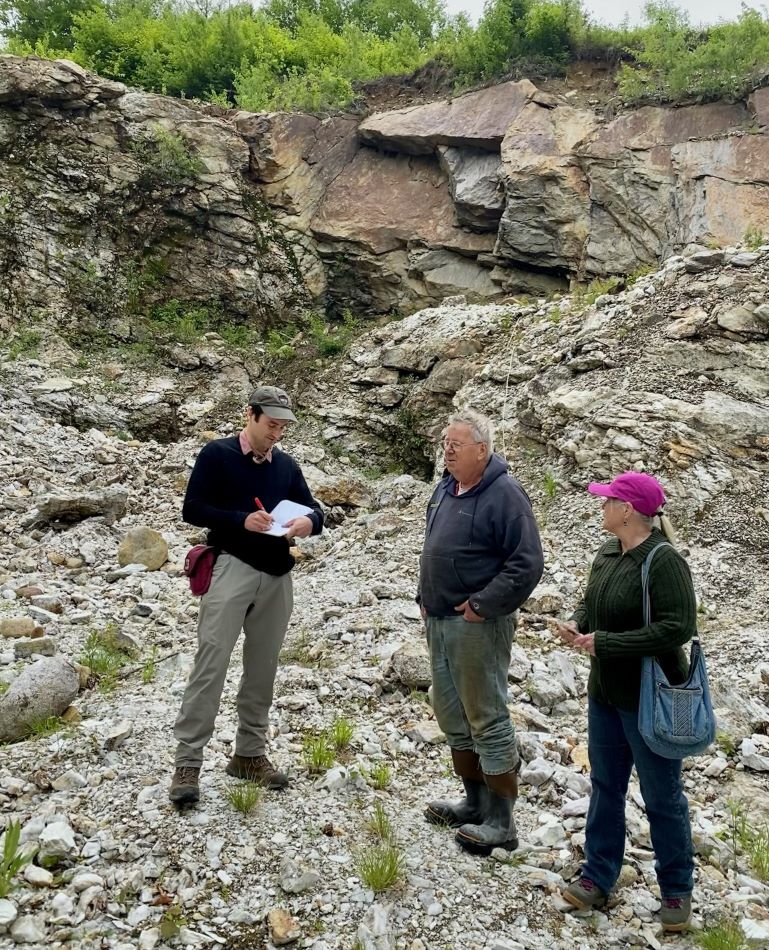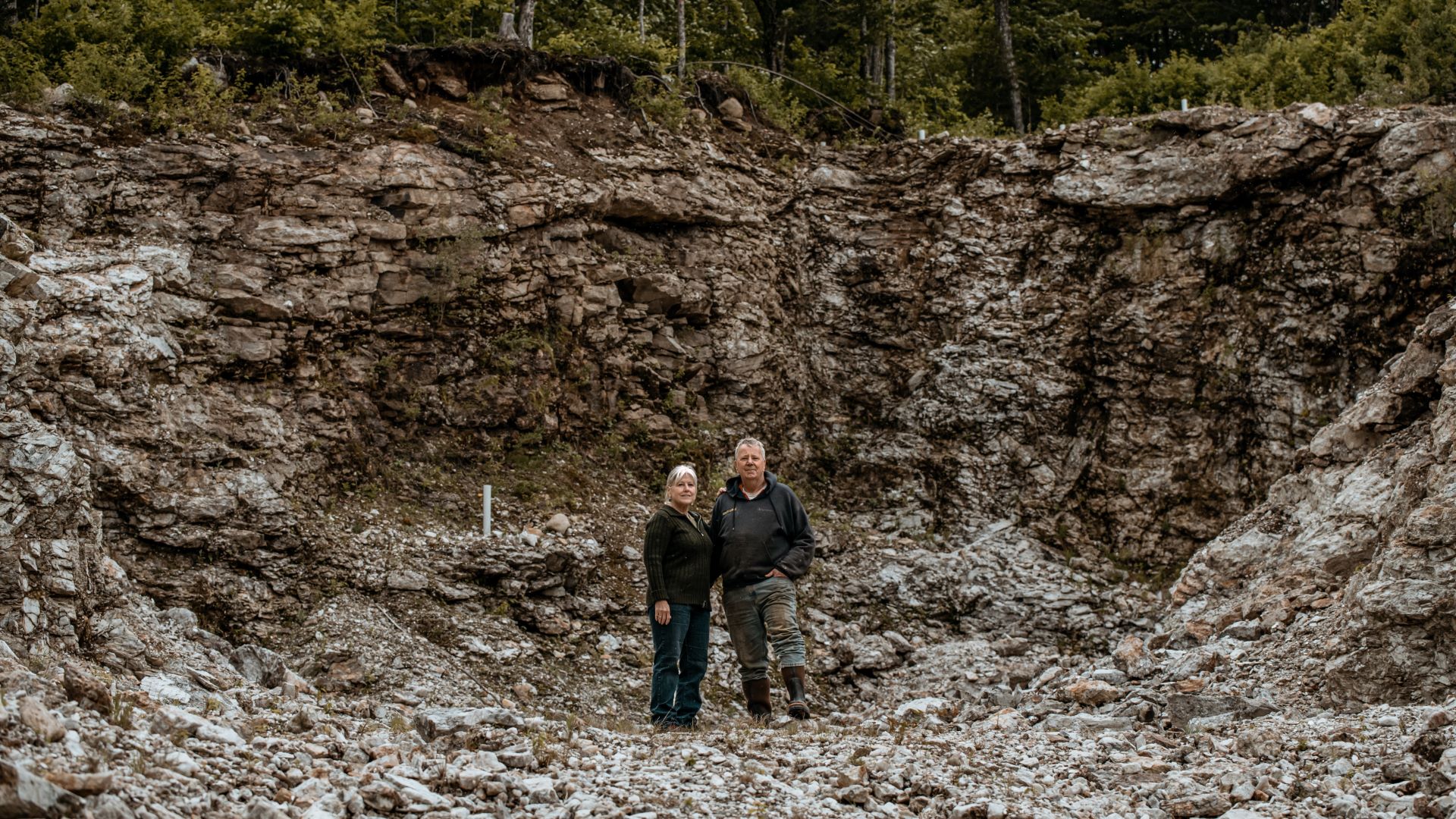An initial group of lawmakers unanimously signed off on changes to the state’s mining act this week that could make it easier to mine for lithium, a highly sought metal used in everything from truck grease to touch screens.
The rule changes, which staff at the Maine Department of Environmental Protection have worked on since late last year, will allow the extraction of certain metallic minerals to be exempt from the state’s stringent mining regulations so long as a mining operation can prove that getting them out won’t pollute the nearby environment.
An amendment approved by the Environment and Natural Resources Committee this week would limit the size of the open pit being mined to five acres at any one time (miners could clear an area up to 10 acres for equipment and other machinery), add requirements for PFAS testing and dark-sky compliant lighting, and, depending on a site’s geology, increase the minimum number of testing samples per acre from two to four.
The text of the amendment was not available by Friday, but the changes were described during a work session on the bill earlier in the week.

Several lawmakers pushed for the additional requirements at the request of some commenters and the Appalachian Mountain Club at a public hearing earlier in the week.
“The new law and rules will apply statewide. Their potential impact on environmental and human health is very real,” said Eliza Townsend, Maine conservation policy director for the AMC. “And I urge you to approach them with care and to understand what it is that you are responsible for.”
Some at the hearing questioned whether the public had been adequately notified of the opportunity for comment, taking issue with the fact that a notice about the hearing on the amended bill did not go out on the legislative listserv until Thursday morning, just four days before the work session.
Cole Cochrane, policy director for Maine Youth Action, said while he was neither for nor against the proposed changes, he was concerned that “Those who (did) not actively participate in the rulemaking process previously were given two business days to review 359 pages of public comments and rule language before the work session.”
The rulemaking process kicked off last summer, when Gov. Janet Mills signed L.D. 1363, An Act to Support Extraction of Common Minerals by Amending the Maine Metallic Mineral Mining Act. The law directed DEP to make changes to the mining act, a process that officially began in December.
Under state law, those changes had to be approved by the citizen-run Board of Environmental Protection, which provisionally adopted them at a meeting in late February, then returned to the legislature for review, which happened this week.
Naomi Kirk-Lawlor, a DEP senior planner, said the agency followed required procedures for making major changes to its rules, holding a Jan. 18 public hearing (a notice went out about that hearing a month earlier) and providing a public comment period that ended Jan. 29.
Maine’s lithium in a legal gray area
Regulators have been discussing where lithium would fall under the mining act since The Maine Monitor reported in 2021 that a couple uncovered a staggeringly rich spodumene deposit in the woods of western Maine.
The deposit was first described in a 2020 paper by several prominent Maine geologists, including Gary Freeman, who owns the land with his wife, Mary.
Mary Freeman, reached by text Friday, declined to comment on the developments.
Spodumene is a multi-colored mineral that contains lithium. It is found in large quantities in Zimbabwe, Brazil and Australia, which produces roughly half of the global supply of lithium.
Smaller deposits have been known in Maine for decades, but this discovery, just north of Plumbago Mountain in Newry, is the first to have major potential. The Freemans have already extracted roughly 700 tons of spodumene from the site under an exploratory permit, which limits the size of the open pit to less than one acre.
Maine has two sets of mining laws, as Nick Bennett, staff scientist for the Natural Resources Council of Maine, explained to lawmakers at a Monday hearing. One applies to material like granite and gravel, which occur close to the earth’s surface and can only be effectively mined in open pits. The state has a long history of quarrying for granite, with many abandoned quarries now serving as swimming holes.
The other law, known as the Metallic Mineral Mining Act, applies to base metals such as zinc and copper, which often occur in bands of rock rich in iron sulfides. When exposed to air and water, iron sulfides create sulfuric acid.
Once the production of sulfuric acid has begun, it can be difficult to stop, polluting waterways for decades — a phenomenon known as acid mine drainage. Because of the possibility of acid mine drainage, Maine law prohibits digging for metals in open pits larger than three acres.
Spodumene falls into a legal gray area. The marketable end product is a metal, but the bands of rocks it occurs in are granitic and close to the surface — in some cases, including in Newry, they’re already partially exposed.
Because of this the Freemans, who own the deposit, have pushed for it to be regulated more like a quarry than a metallic mine. Lawmakers rejected a proposal supported by the Freemans last year to create a blanket exemption for spodumene.
Instead, the legislature and Mills administration supported what DEP staff called a “risk-based approach” that will allow mining operations to be exempt from the law if they can prove “to the Department’s satisfaction” that mine waste generated will not: violate state water quality standards; generate waste with the potential to create acid or alkali rock drainage; release or expose radioactive or other materials that could endanger human health or the environment.
The changes recommended by lawmakers this week will be added to that list.
The bill now heads to the full legislature for a vote. If it becomes law, the DEP will add the changes and bring the amended rule to the citizen-run Board of Environmental Protection for final adoption. The rules will take effect once they are approved and pass legal review.







